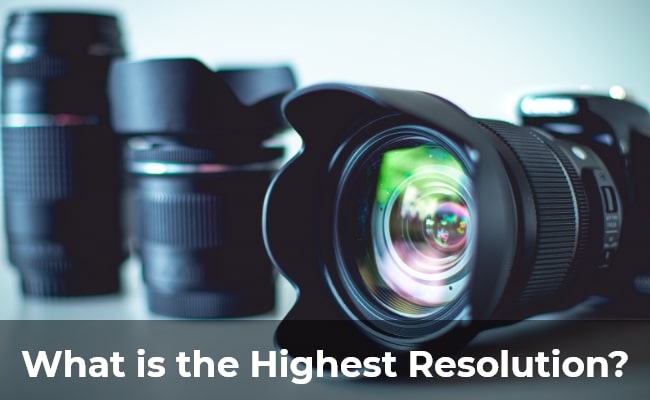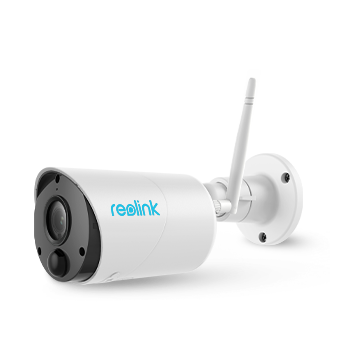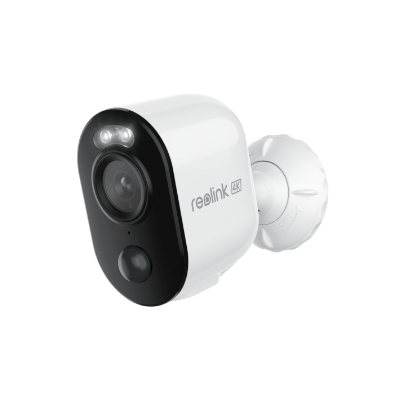What is the Highest Resolution? Exploring Limits

When it comes to screens, images, and visual media, we seem to have an insatiable appetite for ever-greater clarity and detail. As display and sensor technologies continue advancing, consumer devices like cameras, smartphones, and TVs can now capture and showcase content at staggeringly high resolutions.
But what is the highest resolution? What practical limits constrain maximum resolutions? What is the highest pixel resolution? In this article, we will explore what's the highest resolution of current visual technology.
What is Highest Resolution?
The highest resolution can vary depending on the context. In terms of digital images, the highest resolution currently achievable is in the gigapixel range, where images contain billions of pixels. For example, some specialized cameras and techniques can capture images with resolutions exceeding 10,000 x 10,000 pixels, and even higher.
In terms of displays, technologies like 8K and beyond offer extremely high resolutions for TVs and monitors. In microscopy, resolutions can be even higher, reaching down to the nanometer scale. The concept of "highest resolution" is constantly evolving as technology advances.
Understanding Common Resolution
Resolution refers to the number of pixels in an image. Pixels are tiny colored dots that make up a digital image, and more pixels mean more detail and clarity. Resolution is measured by total pixel count, usually given as combinations of numbers like 1920 x 1080 or 3840 x 2160.
The first number refers to the number of horizontal pixels, while the second number is the number of vertical pixels. By multiplying those numbers, you get the total pixel count - so 1920 x 1080 equals around 2 million pixels.
Besides total pixels, resolution can also be measured in dots per inch (DPI) or pixels per inch (PPI). DPI and PPI refer to pixel density, which measures how densely packed the pixels are. Higher pixel counts mean more detail, while higher pixel density makes images clearer and sharper when printed or viewed up close.
What's the Highest Resolution for Different Devices?
Now, let's explore what the highest resolution possible is for different devices and display tech.
Highest Resolution for Camera
For digital still cameras and security video cameras, resolutions of 12, 16, or even 20+ megapixels are now common in higher-end models. More budget-friendly cameras typically max out below 10MP for still photography.
DSLR cameras aimed at professional photographers often capture incredibly large 40+ megapixel images with exquisite levels of detail. Medium format cameras popular in studios top over 100 megapixels.
As for video, surveillance systems boast 4K security cameras capable of 8MP video. And upcoming models like the Reolink 16MP security camera, Duo 3 PoE, will offer even sharper high-res recordings.
Groundbreaking 16MP Dual-Lens PoE Camera
16MP UHD, Dual-Lens, Motion Track, 180° Wide Viewing Angle, Power over Ethernet, Color Night Vision.
This year, Reolink has upgraded its 16MP lineup with the introduction of the new Duo 3 WiFi. This dual-lens camera delivers 16MP resolution and offers a 180-degree extra wide field of view.
Groundbreaking 16MP Dual-Lens WiFi Camera
16MP UHD, Dual-Lens, Motion Track, 180° Wide Viewing Angle, Plug-In WiFi, Color Night Vision.
Highest Resolution for TV
Wondering what is the highest resolution TV? For consumer TVs, 8K resolution is currently the highest available. 8K refers to displays with around 33 million total pixels - typically 7680 x 4320. That's 4 times more detail than 4K or 16 times more than Full HD 1080p TVs.
However, true 8K content is still rarely available. Most "8K" TVs use upscaling tech to make 4K or HD video fit the higher pixel count. So, while 8K sets have extremely high resolution, the resolution of actual content has some catching up. Now you know what is the highest TV resolution.
Highest Resolution for Screens
When looking at computer and phone screens, 4K resolution is becoming a more common standard for high-end models. High-resolution screens with resolutions of 3840 x 2160 or 4000 x 3000 pixels are found on premium laptops, tablets, and the latest smartphones.
For even greater pixel density, some manufacturers offer specialty screens geared toward commercial graphics work, medical imaging, or engineering applications. These professional niche monitors reach 5K, 6K, or even the highest screen resolutions like 7680 x 4800.
Highest Resolution for Monitor
Are you wondering what is the highest resolution monitor? On computer monitors, 4K resolution is currently the highest consumer-level standard, with many models featuring 3840 x 2160 resolution. However, higher does exist.
Niche monitors for applications like graphic design or engineering can reach ~5K resolution (5120 x 2880). And advanced 8K screens have emerged as well, despite the lack of 8K computing content. Professional use monitors optimized for detail work can even hit 10K+ resolutions, though at exorbitant prices.
What is the Highest Resolution Picture?
You might have a question in mind what is the highest picture resolution? The photo of Rembrandt's masterpiece "The Night Watch" boasts a staggering 717 gigapixels, making it the highest-resolution image of a single artwork ever captured. It was created by the Rijksmuseum in Amsterdam using a 100-megapixel camera and stitching together 8,439 individual photos. You can zoom in incredibly close and still see intricate details like individual brushstrokes and facial expressions.
Moreover, the panoramic photo of London, taken by photographer Jeffrey Martin, holds the Guinness World Record for the "World's Largest Panoramic Image." It captures the city's skyline in stunning detail, from iconic landmarks like Buckingham Palace to everyday street scenes. With 320 gigapixels, you can explore every corner of the image and discover hidden gems.
If you are wondering what is the highest resolution image format, then it is the RAW format.
Common Resolution Standards and Limits
To put extremely high resolutions in context, here's a quick overview of common standards and their specifications:
HD
High Definition 720p video resolution refers to 1280x720 pixels. The base-level resolution standard for HDTVs and common across many laptops, tablets, and smartphones.
Full HD
An alternate term for 1080p HD video at 1920 x 1080 resolution. This resolution offers decent clarity but lower pixel density than higher standards.
100% Wire-Free Bullet Camera
Rechargeable Battery & Solar Powered; IP65 Certified Weatherproof; 1080 Full HD; Smart Motion Detection; 2-Way Audio; 100° Wide Viewing Angle.
4K
Refers to 3840 x 2160 UHD resolution. Offers 4 times more detail than 1080p HD. Used in higher-end TVs, monitors, phones, and 4K security cameras for improved clarity and realism.
4K 8MP Standalone Wire-Free Camera
4K 8MP; Smart Detection; 5/2.4GHz Dual-Band WiFi; Battery/Solar Powered; Color Night Vision; Alerts Without Subscription.
8K
The highest current consumer display and broadcast standard at 7680 × 4320 resolution. 4 times more detail than 4K, 16 times more than 1080p. Primarily found only on advanced TVs due to lack of 8K video content.
12MP
High-fidelity camera resolution at around 4000 x 3000 pixels or 12 megapixels total. 12MP allows significant cropping flexibility while retaining detail and can be found in many higher-end phone cameras, DSLRs, and security cameras.
12MP UHD Dome Camera with Color Night Vision
Person/Vehicle Detection; 12MP Ultra HD; Color Night Vision; Remote Control; Two-Way Audio; IP66 Certified Weatherproof.
16MP
An emerging higher-end resolution for phone cameras and expert DSLRs at around 4900 x 3200 pixels. Allows printing extremely large, detailed fine art prints over 40 inches. Also becoming popular in high-end security and surveillance video cameras requiring sharpness.
While 8K is the current practical limit of display tech and devices like 1080p or 4K standards remain commonplace, imaging sensors and cameras regularly reach far higher. 16MP has also been introduced into security camera, with the launch of the Reolink Duo 3 PoE. This dual-lens security camera boosts 7680x2160 16 Megapixel resolution and comes with advanced motion track technology.
How to Find Highest Resolution Across Devices
When shopping for TVs, cameras, smartphones, and other gear, it helps to understand how to find and compare maximum resolutions between models. Here are some quick tips:
- Read Specs: Manufacturers will list the maximum resolution in megapixels for cameras or by standards like 4K, 1080p, etc, for TVs and monitors. These numbers reveal maximum pixel counts.
- Compare Total Pixels: Multiply vertical and horizontal pixel measurements to calculate and compare total resolution between devices. Like 1600 x 900 vs 1920 x 1080. Higher multiplied numbers mean higher resolution.
- Understand Sensor Size Differences: Larger imaging sensors can capture higher-resolution photos, so high MP counts may indicate bigger sensors. Useful to research this when comparing cameras.
- Consider Display vs Content Resolution: Resolution consistency between a device's display and the content it shows matters, too. An 8K TV receiving only 1080p video vs one displaying true 8K content will look vastly different.
- Think About Realistic Usage: Very high resolutions beyond 4K, 8K, or 20MP may exceed what you really require. Higher resolution benefits come with costs, too - storage needs rise significantly for huge images and videos, for instance.
FAQs
What is the possible highest resolution?
Currently, 8K at 7680 × 4320 pixels is the highest resolution in consumer TVs and displays. Niche professional monitors reach ~10K resolutions. In cameras, medium format models breach 100 megapixels, while astronomical telescopes regularly capture 3+ gigapixel cosmic images.
As sensor, chip, and display technologies evolve, even higher resolutions will become possible - perhaps 16K, 32K, or even 50+ gigapixel photos. However, storage, processing, and bandwidth requirements rise exponentially with each jump.
Is 8K the highest resolution possible?
While 8K is the current practical limit for widespread consumer devices, displays with higher resolutions do exist. Niche professional monitors boast ~10K+ resolutions for specialty scientific, engineering, and graphic design applications.
So, in short - 8K is the highest mainstream and commercially viable resolution widely available now. But even higher resolutions are already possible in very niche applications, and this will continue improving.
What is the highest resolution that an English vernier micrometer can display?
The highest resolution commonly found in English vernier micrometers is 0.0001 inch (for inch micrometers) and 0.001 mm (for metric micrometers). However, some specialized models might offer even higher resolutions depending on their specific design and intended use.
Conclusion
Resolution technology continues advancing exponentially across displays, sensors, and other devices. While mainstream standards sit around 2K, 4K, and 8K for TVs and monitors or 12MP to 16MP for digital cameras, specialized gear pushes way past these levels for incredible fidelity and detail. Future techs like 16K displays, terapixel photos, petabyte video formats, and more may redefine boundaries yet again.
What's the highest resolution you can think of? Are you looking forward to the Reolink 16MP Duo 3 PoE? Share you thoughts with us in the comment section below! Let's discuss together!
Search
Subscribe for the Latest Updates
Security insights & offers right into your inbox





